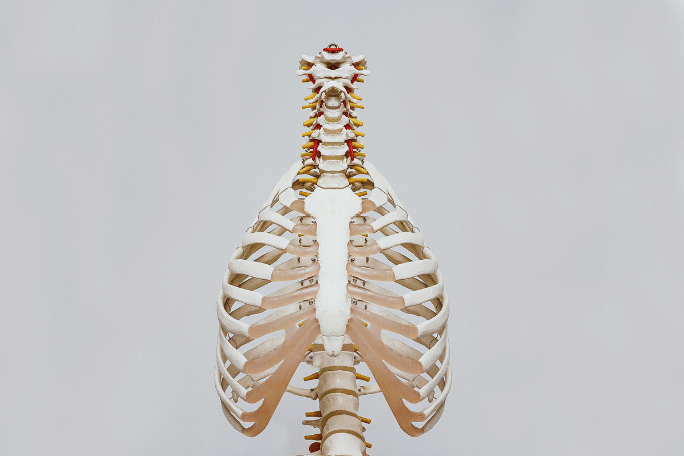Lesson summary
In this lesson, students create working models of the heart, lungs and circulatory system in order to better observe and understand the workings of these organs and systems in moving oxygen and blood around our bodies. They explore the importance of the heart and lungs to our overall fitness and well-being.
The health and fitness-related tasks undertaken throughout the Volkswagen Footy Fit Challenge lessons are gamified, providing incentivised learning opportunities and allowing for some personalisation. Therefore, we recommend students complete the full Volkswagen Footy Fit Challenge unit to benefit from the full experience, completing this lesson first.
Learning intentions:
Students understand...
- the function of the heart
- understand the processes involved in breathing
- understand the interconnectedness of the heart and lungs through the circulatory system
- understand the fundamental importance of the heart and lungs to overall fitness.
Success criteria:
Students can...
- identify and discuss the circulatory system’s responses to exercise
- demonstrate the way blood moves through the chambers of the heart
- demonstrate the way the diaphragm moves to draw oxygen into the lungs
- demonstrate the way these two systems link together to oxygenate the body
- identify the direction of blood flow throughout the circulatory system.
Lesson guides and printables
Lesson details
Curriculum mapping
Australian Curriculum content descriptions:
Years 3 & 4 Health and Physical Education:
- Identify and practise strategies to promote health, safety and wellbeing (ACPPS036)
- Discuss and interpret health information and messages in the media and internet (ACPPS039)
- Examine the benefits of physical activity to health and wellbeing (ACPMP046)
Years 5 & 6 Health and Physical Education:
- Investigate community resources and ways to seek help about health, safety and wellbeing (ACPPS053)
- Plan and practise strategies to promote health, safety and wellbeing (ACPPS054)
- Investigate the role of preventive health in promoting and maintaining health, safety and wellbeing for individuals and their communities (ACPPS058)
Year 3 Science:
- Represent and communicate observations, ideas and findings using formal and informal representations (ACSIS060)
Year 4 Science:
- Represent and communicate observations, ideas and findings using formal and informal representations (ACSIS071)
Year 5 Science:
- Communicate ideas, explanations and processes using scientific representations in a variety of ways, including multi-modal texts (ACSIS093)
Year 6 Science:
- Communicate ideas, explanations and processes using scientific representations in a variety of ways, including multi-modal texts (ACSIS110)
Syllabus outcomes: ACPPS036, SLS2.13, ALS2.6, DMS3.2, PSS3.5, SLS3.13, PHS3.12, ST2-4WS, ST3-4WS
General capabilities: Numeracy, Critical and Creative Thinking
Relevant parts of Years 3 & 4 HPE achievement standard:
Students interpret health messages and discuss the influences on healthy and safe choices. They use decision-making and problem-solving skills to select and demonstrate strategies that help them stay safe, healthy and active.
Relevant parts of Years 5 & 6 HPE achievement standard:
Students describe the key features of health-related fitness and the significance of physical activity participation to health and wellbeing. They access and interpret health information and apply decision-making and problem-solving skills to enhance their own and others’ health, safety and wellbeing.
Relevant parts of Year 3 Science achievement standard:
Students use diagrams and other representations to communicate their ideas.
Relevant parts of Year 4 Science achievement standard:
Students use formal and informal ways to communicate their observations and findings.
Relevant parts of Year 5 Science achievement standard:
Students communicate their ideas and findings using multimodal texts.
Relevant parts of Year 6 Science achievement standard:
They collect, organise and interpret their data, identifying where improvements to their methods or research could improve the data.
This lesson is part of the wider unit of work Volkswagen Footy Fit Challenge – HPE – Years 3-6
Time required: 90 mins
Level of teacher scaffolding: Medium – students will require some assistance in constructing the models.
Resources required
- Blue-Tack or playdough
- Balloons – 3 per small group
- Circulatory System Answer Sheet – one copy per group
- Circulatory System Colouring Sheet – as needed
- Circulatory System Puzzle Instructions – one copy per group
- Circulatory System Puzzle – one copy per group
- Circulatory System Solution – one copy
- Clear plastic bottle – 2L – empty – 1 per small group
- Clear plastic bottles – 600mL – empty – 3 per small group
- Device capable of presenting a video to the class
- Timer
- Devices capable of viewing videos independently
- Elastic bands
- Food dye or cordial (optional)
- Masking tape
- Measuring tapes – one per pair
- Plastic straws
- Scissors
- Sink with access to water
- Student Worksheet – one copy per student
- Volkswagen Footy Fit Challenge Tokens (from Lesson 1)
- Volkswagen Footy Fit Challenge Game Plan (from Lesson 1 or 2)
- Volkswagen Footy Fit Stadium Scoreboard (from Lesson 1)
Skills
This lesson is designed to build students’ competencies in the following skills:
- Communication
- Critical thinking
- Collaboration
- Problem solving
- Social skills
Additional info
The Volkswagen Footy Fit Challenge is a unit of work designed in collaboration with the Sydney Swans to promote health and wellbeing amongst students in years 3 to 6. It is designed to align with, and provide further depth to, the in-schools Volkswagen Footy Fit program for years 2 to 6.


Welcome back!
Don't have an account yet?
Log in with:
By signing up to Cool.org you consent and agree to Cool's privacy policy to
store, manage and process your personal information. To read more, please see
our privacy policy here(Opens in new tab).
Create your free Cool.org account.
Many of our resources are free, with an option to upgrade to Cool+ for premium content.
Already have an account?
Sign up with:
By signing up to Cool.org you consent and agree to Cool's privacy policy to
store, manage and process your personal information. To read more, please see
our privacy policy here(Opens in new tab).